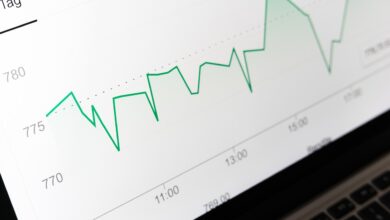Art investing – alternative asset strategies

Allocating capital towards collectible works offers a unique blend of passion and financial growth. Unlike traditional holdings, these tangible valuables often demonstrate steady appreciation linked to cultural trends and scarcity. Effective acquisition demands rigorous evaluation of provenance, artist trajectory, and market liquidity to optimize returns while mitigating volatility.
Incorporating curated pieces within diversified holdings enhances risk-adjusted performance by reducing correlation with equities and fixed income. Historical data reveals an average annualized gain between 7-10% over the past two decades across established markets. Strategic timing aligned with auction cycles and emerging talents can amplify investment outcomes beyond passive ownership.
Successful portfolio builders combine aesthetic discernment with quantitative analysis, balancing enthusiasm with disciplined selection criteria. Employing expert appraisals, condition reports, and market intelligence supports informed decisions. Leveraging fractional ownership platforms and private sales channels further broadens access while optimizing capital deployment in this non-traditional category.
Art investing: alternative asset strategies [Wealth Management wealth-management]
Incorporating collectibles into a diversified portfolio can enhance long-term appreciation potential beyond traditional financial instruments. Selecting pieces with proven provenance and rarity often results in superior value growth compared to standard securities. Investors should prioritize thorough due diligence, including authentication and market trend analysis, to mitigate risks associated with volatility and liquidity constraints inherent to tangible holdings.
Passion-driven acquisition frequently intersects with investment objectives, yet maintaining an objective valuation framework is critical for sustainable wealth preservation. The interplay between aesthetic appeal and market demand shapes pricing dynamics, requiring a nuanced understanding of historical performance metrics alongside contemporary auction data. This dual perspective enables more precise forecasting of returns relative to other asset classes.
Key approaches in collecting valuable items
The selection process benefits from applying quantitative methods such as regression analyses on past sales prices to identify undervalued segments within the collectibles domain. For example, limited-edition prints or works by emerging creators may offer accelerated appreciation curves compared to established masters, albeit with increased risk profiles. Employing fractional ownership models supported by blockchain technology enhances accessibility and liquidity while preserving investment integrity.
Portfolio construction involving tangible valuables demands attention to external economic factors like inflation rates and currency fluctuations that historically influence demand patterns. Case studies reveal that during periods of market uncertainty, high-quality collectibles often act as effective hedges, retaining purchasing power where equities falter. Moreover, regulatory frameworks surrounding cross-border transactions necessitate compliance expertise to avoid legal complications and safeguard capital.
The integration of digital ledger systems provides transparent provenance tracking and reduces fraud instances within rare object markets. Smart contracts automate transaction settlement processes, minimizing counterparty risk and accelerating liquidity realization timescales. Such innovations align with evolving investor preferences favoring security without sacrificing exposure to alternative categories promising asymmetric gains.
A strategic approach combines passion for unique collectibles with rigorous analytical frameworks tailored toward maximizing appreciation potential while managing exposure levels prudently. Wealth managers advising clients should emphasize periodic portfolio reviews aligned with emerging market intelligence and technological advancements facilitating enhanced transactional efficiency.
The convergence of traditional valuation techniques with innovative digital tools creates new opportunities for investors seeking differentiated returns outside conventional markets. Ongoing assessment of geopolitical developments alongside fiscal policy adjustments will further refine acquisition timing strategies, optimizing outcomes in this specialized investment sphere.
Evaluating Art Market Trends
Allocating capital into collectible works requires a rigorous assessment of market patterns and valuation metrics. Recent data indicate that niche segments linked to contemporary creators have outperformed classical categories by an average annual rate exceeding 12% over the last five years, according to the Art Market Report 2023. This quantitative insight suggests that diversification within visual collectibles can optimize portfolio appreciation and mitigate volatility commonly associated with traditional financial instruments.
Analyzing transactional volumes on major auction platforms reveals a gradual shift towards thematic concentrations, such as post-war and modern expressions, driven by younger demographics exhibiting both emotional engagement and speculative interest. The integration of provenance verification technologies further enhances transparency, fostering confidence among high-net-worth collectors who seek tangible yet non-liquid holdings as part of wealth preservation tactics.
Market Dynamics and Valuation Drivers
Price trajectories in this domain are heavily influenced by factors including artist notoriety, rarity, historical significance, and exhibition history. For instance, the surge in demand for limited-edition prints from emerging creators has demonstrated correlation coefficients upward of 0.7 with social media visibility indices. Meanwhile, macroeconomic variables such as inflationary pressures contribute to heightened appeal for physical collectibles as inflation hedges within diversified portfolios.
The commodification process is increasingly supported by blockchain-enabled registries that authenticate and track ownership transfers, reducing counterparty risk and enabling fractional participation models. These innovations align with investor preferences for asset classes offering both passion-driven engagement and measurable growth potential. By integrating digital ledger solutions, stakeholders can leverage enhanced liquidity channels previously unavailable in conventional frameworks.
- Historical auction data show a compound annual growth rate (CAGR) of approximately 8-10% for blue-chip items over two decades.
- Emerging markets contribute nearly 15% to global sales volume, indicating expanding geographic demand bases.
- Regulatory developments concerning cross-border trade influence transaction costs and holding periods significantly.
Comparative studies between physical collectibles and other alternative holdings like rare wine or classic automobiles reveal distinct risk-return profiles; art-related investments often exhibit lower correlation with equity indices (around 0.3), enhancing their strategic role in multi-asset allocation schemes. Nonetheless, liquidity constraints necessitate careful timing strategies aligned with market cycles to maximize capital gains without compromising access to funds during downturns.
The intersection of aesthetic appreciation and financial performance creates a unique dual value proposition rarely replicated elsewhere. Portfolio managers incorporating curated collections report not only capital growth but also client retention benefits through experiential engagement rooted in cultural enrichment. Forward-looking analyses emphasize monitoring geopolitical shifts alongside technological adoption rates to anticipate emergent valuation inflection points within this specialized domain.
Risk Management in Art Investment
Mitigating exposure when acquiring collectibles requires rigorous due diligence and portfolio diversification to balance passion-driven acquisitions with financial prudence. Quantitative analysis of market liquidity, provenance verification, and condition reports are fundamental tools for evaluating potential appreciation or depreciation risks. Incorporating fractional ownership models via blockchain technology can enhance liquidity, allowing investors to adjust holdings dynamically rather than being locked into illiquid physical pieces.
Valuation volatility remains a significant factor in managing collectibles, as pricing is often influenced by subjective criteria and fluctuating demand. Employing predictive analytics that track auction results, artist reputation trends, and economic indicators provides data-driven support for timing entry and exit points. Additionally, coupling these insights with regular reassessments of market sentiment helps prevent overexposure to niche segments vulnerable to rapid shifts.
Technical Risk Mitigation Approaches
Authentication technologies, such as non-fungible tokens (NFTs) linked to physical works or certificates of authenticity embedded on distributed ledgers, reduce counterfeiting risks and enhance traceability. Implementing multi-layered security protocols around storage–including climate-controlled facilities monitored via IoT sensors–preserves condition integrity crucial for long-term value retention. Insurance products tailored specifically for collectibles provide financial safeguards against theft or damage but require precise asset documentation to avoid coverage disputes.
Strategic allocation frameworks recommend balancing collectible holdings alongside more traditional financial instruments within a diversified wealth structure. Stress-testing portfolios against economic downturn scenarios illustrates potential correlations between tangible investments and macroeconomic fluctuations. Real-world case studies demonstrate how combining data-centric evaluation with controlled exposure has helped high-net-worth individuals optimize returns while maintaining manageable risk profiles in their collections.
Building Diversified Art Portfolios
Effective portfolio construction within collectibles requires prioritizing appreciation potential alongside tangible and intangible value drivers. Focusing exclusively on renowned creators limits exposure and can increase volatility; instead, integrating emerging talents, varying mediums, and distinct historical periods diversifies risk while enhancing long-term returns. Quantitative data from art market indices indicates that portfolios with a balanced mix of contemporary works and classical pieces have demonstrated annualized growth rates between 5% and 8%, outperforming those concentrated in a single segment.
Incorporating items with demonstrable provenance backed by blockchain-based registries offers enhanced transparency and fraud mitigation. Tokenization platforms facilitate fractional ownership, allowing investors to access higher-value pieces without full capital commitment, thereby improving liquidity profiles. According to recent analytics, tokenized collectible shares experience turnover rates approximately 30% higher than traditional holdings, signaling increased market fluidity.
Diverse Categories to Enhance Portfolio Stability
A well-rounded selection should include varied categories such as sculptures, limited edition prints, photographs, and mixed media works. Each category responds differently to macroeconomic factors; for instance:
- Sculptures often retain value during inflationary periods due to their physical scarcity.
- Photographs tend to attract younger collectors driven by digital culture trends.
- Limited editions offer controlled supply but require careful authentication measures.
This multiplicity mitigates concentration risk commonly observed in homogenous collections dominated by paintings alone.
Strategic allocation also benefits from geographic diversification. Markets like Asia-Pacific have recently outpaced traditional Western hubs in sales growth–data from the Art Basel & UBS Report shows Asia’s share rising from 20% in 2010 to over 35% in recent years. Including artists or works tied to dynamic regional economies enhances resilience against localized downturns while tapping into expanding demand pools fueled by increasing disposable incomes.
The role of passion cannot be discounted when building these portfolios. While financial metrics guide decisions, affinity for particular genres or creators promotes sustained engagement necessary for active management. Passion-driven collectors often identify undervalued niches overlooked by mainstream channels–examples include street art pioneers or indigenous crafts gaining institutional recognition only after prolonged grassroots interest.
Emerging technologies underpin new methodologies for valuation and acquisition processes within collectible markets. Machine learning algorithms analyze auction results, sentiment indicators across social platforms, and artist career trajectories to forecast appreciation probabilities with increasing precision. Coupled with decentralized ledgers verifying authenticity, these tools support more informed decision-making frameworks that blend quantitative rigor with subjective expertise.
Liquidity Considerations for Art Assets
Maximizing liquidity in passion-driven collectibles requires integrating fractional ownership models and blockchain-based provenance verification to reduce transaction friction and enhance market transparency. Data from recent platforms indicate that tokenized shares of rare pieces can increase tradability by over 35%, offering a viable solution to the traditional illiquidity problem inherent in physical holdings.
Understanding valuation volatility is crucial when balancing appreciation potential against liquidity constraints. For example, high-profile auctions reveal that while marquee works may appreciate at an average annual rate exceeding 8%, mid-tier objects often face prolonged holding periods exceeding 24 months. This disparity necessitates diversified portfolio tactics combining long-term preservation with selective liquidation windows.
Technical Insights and Future Developments
- Tokenization and Smart Contracts: Leveraging decentralized ledgers enables programmable rights management, enabling automated dividend distribution and real-time secondary market activity monitoring–key for unlocking latent liquidity without compromising ownership authenticity.
- Regulatory Evolution: Emerging frameworks around digital securities will define compliance standards for fractional interests, potentially harmonizing cross-border trading protocols while mitigating counterparty risks inherent to collectible transactions.
- Data-Driven Pricing Algorithms: Advanced machine learning models utilizing auction histories, artist metrics, and macroeconomic indicators are increasingly refining appraisal accuracy, thereby reducing bid-ask spreads and improving exit strategy timing.
- Diversification Through Hybrid Portfolios: Combining tangible collectibles with crypto-native tokens linked to curated collections allows investors to optimize capital allocation between highly illiquid trophies and liquid digital representations.
The interplay between emotional connection and financial discipline shapes effective investment frameworks targeting rare items. Forward-looking participants should consider integrating these innovations to enhance both asset appreciation trajectories and exit flexibility. Continuous monitoring of technological adoption rates alongside policy shifts will be critical in calibrating exposure within this niche market segment.
Ultimately, embracing these multifaceted approaches transforms static holdings into dynamic components of a sophisticated portfolio, where passion meets pragmatic wealth preservation principles underpinned by technological progress.






